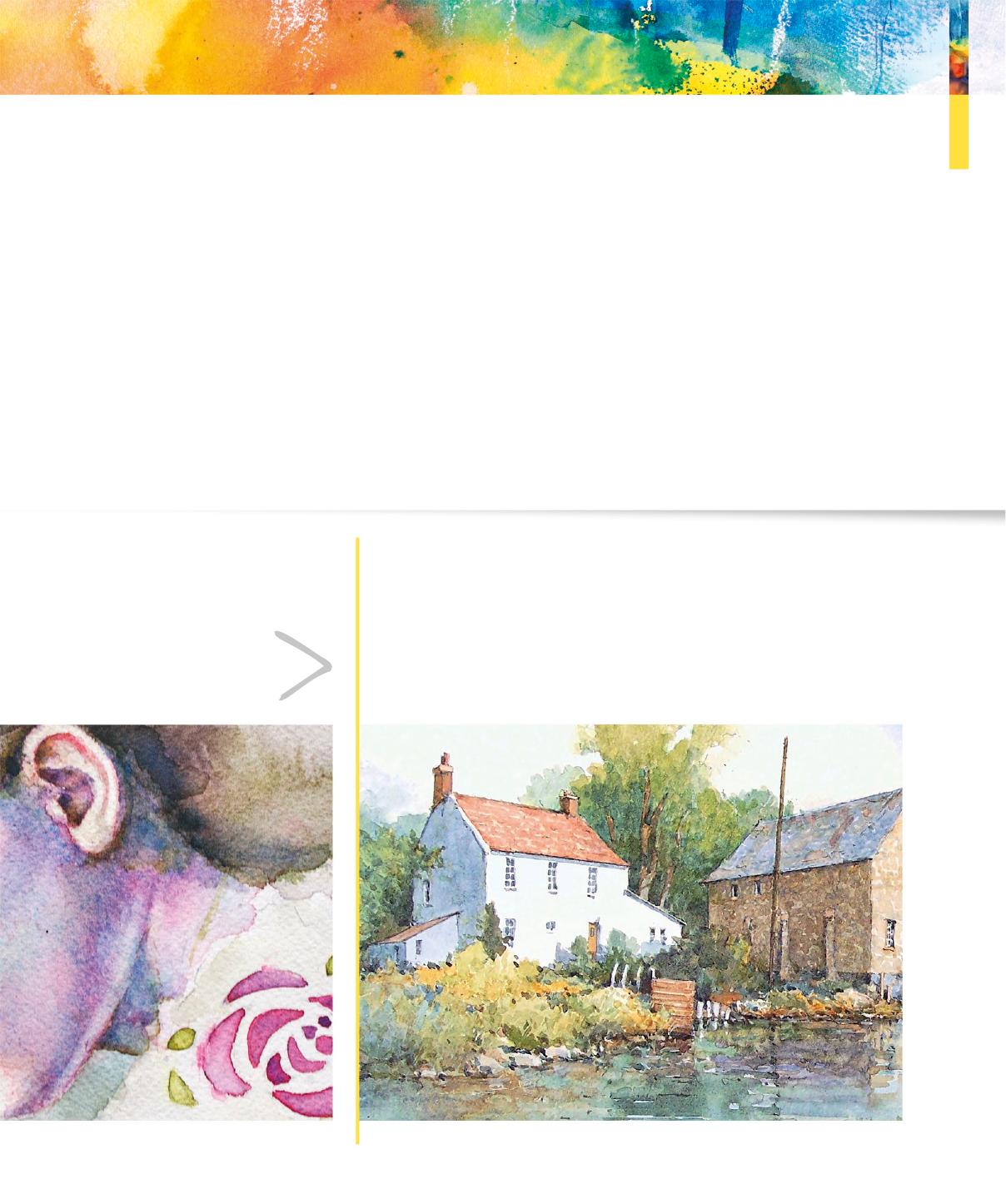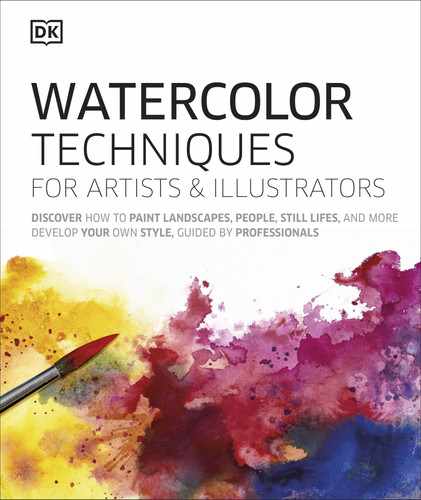
48
Beginner showcase painting (see pp.64–65)
Softening edges (see pp.94–95)
Intermediate
techniques
See pp.90–127
In the second section, develop an
understanding of color theory to
use warm and cool colors, aerial
perspective, and complementary
and analogous colors to best effect,
with techniques such as glazing.
2
INTRODUCTION
Watercolor techniques
As a medium, watercolor is incredibly versatile, taking you from simple at washes to mixed
media and textured surfaces that suit many painting styles and subjects. The uid, transparent
nature of the paint makes it easy to apply with expressive strokes, producing paintings where
colors blend and merge seamlessly with sparkling luminosity.
On the following pages, you will nd 45 techniques to practice and develop your skills.
They are grouped into three sections designed to build your repertoire and hone your style,
from core techniques such as layering washes in the beginner section, to using theories of
color and composition in the intermediate section, to experimenting with mixed media in the
advanced section. Showcase paintings in each section bring numerous techniques together.
Beginner
techniques
See pp.50–89
The rst section explains how to
lay your base washes, working
from light to dark in either
wet-in-wet or wet-on-dry
applications, along with tips
on how to remedy mistakes.
1
US_048-049_Intro_Watercolour-techniques.indd 48 09/04/2020 11:05am

49
Linear perspective (see pp.134–137)
Advanced
techniques
See pp.128–167
In the nal section, nd out about
the principles of linear perspective
and focal points, and how to
combine special effects or mixed
media—from gouache to charcoal—
to develop your style further.
3
Watercolor paint ows easily and
this unpredictable nature is part of
its appeal. Learning to control this
characteristic is fundamental to working
with watercolor, from laying an even
wash to incorporating runbacks into
your work. Allowing the paint to merge
wet-in-wet produces subtle blends and
effects. In contrast, you can also work
wet-on-dry, to add crisp detail and
controlled edges.
A wash is a great starting point for
understanding watercolor; practice
laying different types of washes, from
graduated to the more advanced
separating washes. When working from
light to dark, you need to consider how
to convey highlights, using techniques
that either retain lights, from using
masking uid to wax resist, or remove
color through lifting out with a brush,
or the more advanced effects of using
bleach and salt.
To imbue your painting with light,
exploit the transparency of the paint
to lay color in layers, using glazing
to build depth or adjust the color or
tone of a wash.
A versatile approach
The range of techniques and approaches
available in watercolor make it an
ideal medium for many styles of
painting. Loose and abstract marks
can be complemented with splattered
effects or added gouache highlights.
Pen and wash is ideal for working in a
sketchbook but also adapts to a more
illustrative style. Combining watercolor
with mixed media opens up myriad
options, with applications for
illustration and design using detailed
drawings and pattern making.
US_048-049_Intro_Watercolour-techniques.indd 49 09/04/2020 11:05am
..................Content has been hidden....................
You can't read the all page of ebook, please click here login for view all page.
